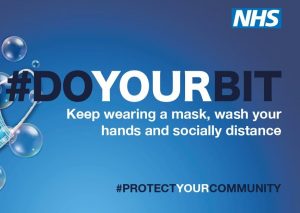There are ways to promote fitness that will improve wellbeing, motivation and productivity rather than just irritating your employees.
Many of us spend our day mostly sitting at desks, working with computers, getting up occasionally for a cup of tea. With more than a year in and out of lockdown, fitness isn’t necessarily at the front of our minds.
But with 6.9 million working days a year lost to musculoskeletal disorders in the UK, it’s worth promoting the idea of health and fitness in the workplace.
There are several important ways that promoting health and fitness in the workplace brings benefits to your business.
A good employee fitness and wellness programme in the workplace should be voluntary, non-intrusive and inclusive of people of all fitness levels and abilities. While you might be an avid climber or mountain biker, not everyone in the office will have the right equipment or head for heights!
Start off small. Encourage people to walk to work instead of driving, or even just to get off the bus a stop early. An employee fitness programme doesn’t have to mean everyone hits the gym on Monday morning. Try to avoid coming over as patronising — humour is a good approach.
Ideas that will increase employee fitness and productivity in the workplace include the following.
Rather than trying to put together an employee fitness programme yourself, you could always use an external company. Many places offer discounted corporate gym memberships, apps with step trackers, and great deals on healthy food. Providing an employee benefit like this will boost your reputation and enhance employee morale.
Start with this online challenge from the NHS – CLICK HERE
Contact Walker Health and Safety Services for further information.

Coronavirus has created the most challenging and difficult time for us all
With the Government confirming that face coverings will no longer be compulsory in shops, hospitality and on public transport in England from 19 July 2021, employers will be asking what this means for them.
From 19 July 2021, there will be a shift by the Government from instructing us all to follow strict rules to a greater emphasis on individuals making their own decisions on what steps they feel they should be taking to keep themselves safe. This shift of responsibility gives employers more flexibility when it comes to deciding whether to require staff to continue wearing face coverings in the workplace but also leaves employers with a difficult decision to make.
The Government will provide guidance on where individuals may still choose to wear a face covering, for example in places where they come into contact with those who are outside of their bubble. However, ultimately, in the workplace the decision will be left to the employer.
As an employer, your duty of care to safeguard the health, safety and wellbeing of your employees does not change because the Government states that people no longer have to wear face coverings. When making their decision, employers should consider the nature of the workforce and listen to individual concerns. There are likely to be some employees who will be relieved to not have to wear face coverings; however, as they are worn to protect people around an individual, rather than the wearers themselves, there are also likely to be a number of employees who are concerned about the implications of not wearing one. Furthermore, you may have younger staff who have not had the opportunity to be fully vaccinated, or vulnerable/extremely vulnerable staff who are concerned about colleagues not wearing face coverings.
The organisation should review its Covid risk assessments in view of the changes. This will help you decide on which controls, such as the continued use of face coverings, might need to be retained. You can then update your policy on face coverings in the workplace and communicate it to all staff, so employees know where they stand. If you decide to make face coverings mandatory in the workplace, remember that some employees may continue to be exempt.
Alternatively, your policy may be that face coverings are no longer required but staff can wear a face covering if they want to, or that face coverings are required only in certain circumstances, such as meetings over a certain size, etc.
Be prepared that you may receive some resistance from whichever group has not achieved their preferred outcome. Employees should be expected to comply with workplace rules set by the employer. However, to manage any such resistance, listen to individual circumstances and explain how these have been taken into account in your risk assessments.
Bear in mind that it is not just in the actual workplace that employees may be concerned; public transport may be a worry to some employees if others are no longer wearing face coverings, especially at peak travel times.
There are various measures that you can consider from a HR and health and safety point of view to help make employees feel more comfortable with the transition to a face covering free workplace.
From 19 July 2021, it will be the employer’s choice whether to require employees to wear face coverings in the workplace or not. This will be a difficult decision for many employers trying to balance the individual circumstances of the workforce.
Whichever route the employer decides to take is likely to meet with some resistance from one group or another. Make sure you listen to employee concerns and redo your workplace coronavirus risk assessment. Review this regularly to ensure your risk control measures are working as expected. Have a clear, reasonable policy and be prepared to justify your approach.
Contact us if you require further information.
Why have this talk? Statistics show that alcohol and drug misuse are increasing in the workplace. This talk is to make all employees aware of their responsibilities and understand that alcohol and drug abuse in the workplace can lead to accidents.
What will this talk cover? The effects of alcohol and drugs on your safety and that of others.

Toolbox Talk: Alcohol and Drugs at Work
Alcohol is a depressant drug which reduces brain function. This means it does not mix well with work. In high risk industries, alcohol increases the risk of fatal accidents.
If you drink, don’t drive. Many drivers who are killed in road accidents are over the legal alcohol in blood limit.
All drugs can affect your ability to work safely because they can slow down your reaction times, affect your co-ordination making you clumsy, affect your decision making and distort your vision. As a result, the chance of having an accident at work is increased when you are under the influence of drugs.
If you become aware that somebody is on drugs in the workplace, inform your line manager. You may feel it has nothing to do with you but you need to prevent others getting hurt because of their actions.
If you get offered drugs, say no, it is far better to work safely. Drugs and work don’t mix. Don’t let it become a problem for you and if is, get some help.
Some signs of colleagues being under the influence of drugs include watery eyes, dilated pupils, running nose, constant sniffing, tight lips, sores, ulcers, trembling, fatigue and irritability. If you see it, report it.
Contact us if you have any questions.

Weʼre raising £5,000 to To help Liam with his rehabilitation and to reach his full potential – fund activity for private physiotherapy sessions. John Evans is walking up the Wrekin every day in July to raise funds. Walker Health and Safety Services sponsored him for day 9 out of 31!
Liam had just turned 5 when he was diagnosed with burkitts leukaemia in December 2016.

During the chemotherapy, while neutropenic with no immune system, Liam contracted enterovirus in his spinal fluid which caused encephalitis (inflammation of the brain), resulting in a severe acquired brain injury.
Liam is now 9 years old and has been in remission from the leukaemia for 4 years. Unfortunately due to the brain injury Liam is wheelchair dependant, non verbal, tube fed and trying to relearn the skills he once had.
As the human brain isn’t fully developed until 25 years of age, the hope is that with the correct therapy input other parts of Liam’s brain will be able to learn to do the activities that the injured parts of the brain used to do.

Liam has come on so much in so many ways since he first suffered from the brain injury but there is still such a long way to go. Therapy on the NHS is very limited, therefore to help Liam with his rehabilitation and to reach his full potential we also need to fund private physiotherapy sessions.
Contact us if you would like to donate or follow this link, mention your business name to sponsor one of John’s walking days. Crowdfunding to To help Liam with his rehabilitation and to reach his full potential – fund activity such as private physiotherapy sessions. on JustGiving
Thank you.

Part of our legal duties as an employer is to communicate our health and safety policy, while the legal duties for employees is to abide by the policy to ensure the health and safety of everyone.
The organisation’s policy on health and safety, why it is important and how employees can have an input into the ongoing development of the policy.

Toolbox Talk: Health and Safety Policy
Contact us for further information.